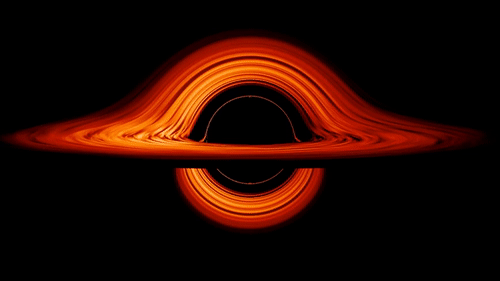According to CNET report, NASA released the theme music of this year's black hole week on Wednesday** Literally, it is the "soundtrack" of a black hole. Rather, it is the melody of a huge, deformed black hole, located more than 200 million light-years away from the earth. It is found at the center of the so-called Perseus galaxy cluster, a majestic Galaxy beam 11 million light-years wide, composed of hundreds or even thousands of galaxies shrouded in hot gas.

Although the size of the Perseus cluster itself is staggering, astronomers have been most interested in all hot gases since 2003. Because these things are why they can hear almost unimaginable sounds - the huge black hole in the center of Perseus. These sounds are likely to be people's expectation of the black hole "soundtrack" - gloomy, scary and mysterious.
Decades ago, astronomers discovered that pressure waves emanate from the hollow interior of Perseus. These ripples form ripples in all the hot gas around the area, and these ripples, in essence, can be converted into sound. Think of sound waves as vibrations in the air -- or vibrations of things in the air. Our ears can catch these vibrations and turn them into audible noise on earth, but in space, the situation is a little different.
Because space is a vacuum, there is no medium for sound waves to pass through. That's why space is often considered completely quiet - and, to some extent, it is. But this silence is not true, because the sound transmitted in space does not exist. Their waves just don't have anything to vibrate.
On the other hand, the Perseus black hole can pass through this space vacuum sound barrier because it is so close to the gas of the star cluster. It can produce sound waves and vibrations, and these are the hot gas ripples that scientists are concerned about.
So in 2003, a team at NASA's Chandra X-ray Observatory took astronomical data from gas ripples and transformed them into normal sound waves we're used to on earth. However, for a long time, there was a major obstacle that prevented us from listening to the "song" of the black hole.
When the scientists completed the sonochemical process, they found that the abyss of Perseus played 57 octaves lower than Alto C. Our ears can't hear this. This is where NASA's new black hole "mixing" comes into play.
To mark black hole week, the agency extracted the identified black hole sound waves and amplified them by 57 and 58 octaves, so that we can finally hear the "call" of the void.
"The alternative is that what you hear is 144.4 billion and 288.4 billion times higher than their original frequency," NASA said
And, as an additional bonus, NASA released another less ominous black hole sound wave. This black hole, located at the center of Messier 87 galaxy, is famous for being the first black hole ever photographed.
However, the reason why this song is so beautiful is that it is not like the music of Perseus void. It is completely the product of pure and isolated astronomical data. It comes from three different data containers - Chandra's X-rays, Hubble's optical light and radio waves from Chile's Atacama large millimeter array - superimposed on each other.